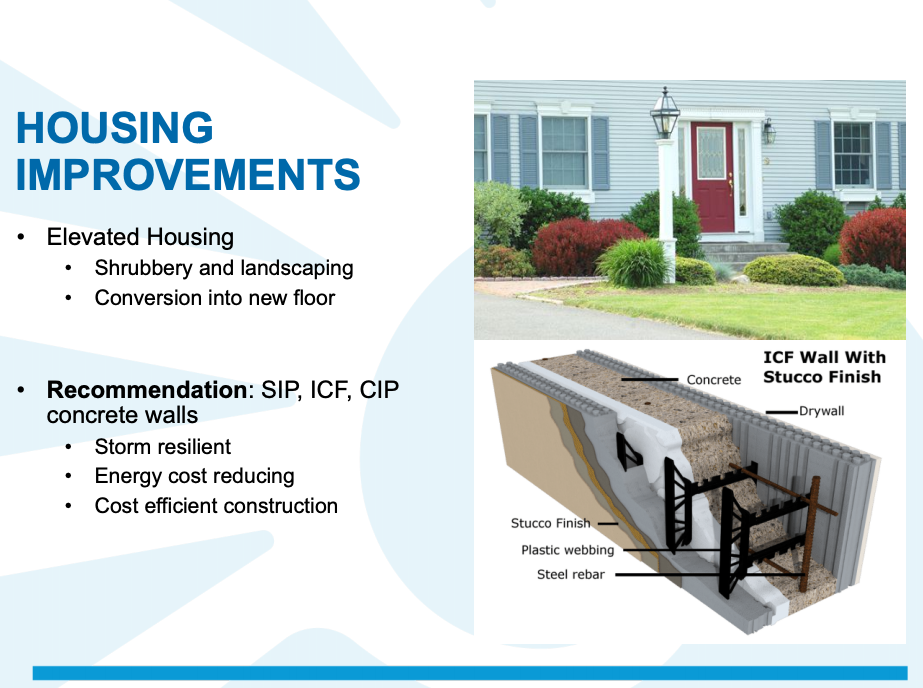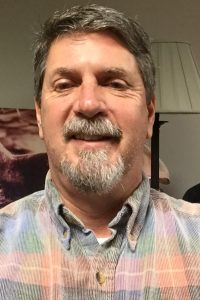
Part 3: Outcomes
In October 2018, Hurricane Michael made landfall in the Florida Panhandle as a Category 5 storm, arriving with peak winds of 155 miles per hour and leaving in its wake more than $25 billion in damages. The most impacted communities, many of them rural and with local governments administratively under-staffed relative to the rebuilding task before them, were in critical need of resources to begin the long road to recovery, many forced to rebuild from the ground up.
Representatives from FEMA’s National Disaster Recovery Support (NDRS) cadre coordinated a federal response that included partnering with college and university faculty and students to provide technical planning expertise — a model CRC has also used for recovery from 2016’s Hurricane Matthew. This is Part 3 of a story of how the ongoing work of connecting and coordinating institutions of higher education with under-resourced communities and local governments can improve long-term recovery outcomes. Read Part 1 here and Part 2 here.
Calhoun County: Outcomes
Dr. Owusu-Daaku and his team of students traveled back to Calhoun County in early December 2019 to present their findings. The team took care to address recommendations from the initial assessment conducted by HUD in the early months of the recovery, while also conducting surveys to include the perspectives of the residents.
Affordable housing, both rental and owned, was a major concern, especially for the elderly and populations with special needs. They assessed the quality of existing housing stock and made recommendations for the quality of future construction to make the homes storm-resilient. Included in their analysis were potential changes to the all-important building code. Two other key aspects of the report focused on the replenishment of housing near employment hubs and the need for systematic public outreach to provide credible and timely information to residents and to educate residents on ways to finance a home.
“The board of county commissioners were extremely impressed with the work, and hope to integrate recommendations into their final plans for use of the housing trust fund allocations,” Dr. Scriven said.
“I envision us being able to work with many other communities who have experienced some loss – either from an extreme event such as a hurricane or a slower onset process such as land, water and air contamination from pollution – in building their resilience to such impacts.”
While Dr. Owusu-Daaku was satisfied with the students’ assessment and final recommendations, he noted that the biggest barrier for implementation was the county’s lack of staffing and resources. Calhoun County was already a relatively poor county, he said, so the post-hurricane situation was not ideal for staff and commissioners having the time to help them gather information or contact people that they needed for a more thorough analysis.
In the spring semester, students developed a set of guidelines for conducting future parcel-level environmental analysis in Calhoun County.
“I envision us being able to work with many other communities who have experienced some loss – either from an extreme event such as a hurricane or a slower onset process such as land, water and air contamination from pollution – in building their resilience to such impacts,” Dr. Owusu-Daaku said.
University Integration in Disaster Recovery: Moving Forward
Disaster response and recovery is not the primary business of colleges and universities. Unlike the American Red Cross, the International Medical Corps, Habitat for Humanity International and others, “there is no disaster response/recovery structure or system to enact when working with a very diverse academic community,” Dr. Scriven said. It takes deliberate planning.
As part of her work with the FEMA NDRS cadre, Dr. Scriven is working to increase university integration in disaster recovery and to increase support to communities. It is already underway.
“Networks of universities, such as RISE in Puerto Rico and Department of Homeland Security-sponsored Centers of Excellence, are increasingly becoming involved in disasters – in the field, as part of their research, and in their efforts to educate future leaders who can use their training to help mitigate, if not suppress the catastrophic impact of disasters on communities and the nation,” Dr. Scriven said.

Expanding CUPP
Back at EPA, Durbrow said the work he has seen on the CUPP-supported recovery projects has been impressive.
“Students have a great deal to offer and some really good ideas that can help communities fill some of the gaps that they just don’t have the bandwidth to take on during disasters,” he said. “Many folks can get up and leave when disaster strikes, but the mayor and many city officials are trying their best to manage the response and recovery process. Getting to the decision point for their way forward requires some analysis to give them direction. Using student input is one way to obtain that information and under CUPP is certainly affordable.”

Monlyn, the current chair of the Calhoun County Board of Commissioners, said the community rallied around the efforts by the students.
“We saw a town come together and learn to get along with each other,” he said. “We saw a town devastated and everyone tried to help each other, no matter what the color may have been. From all around the globe – we have people here from New York, from Maine, from within other counties in Florida – they came here to Blountstown, Fla., to help. That’s what touched me the most – how people come together in a time of devastation.”
Durbrow said there is interest in using the CUPP model more in future recovery. Since it does not rely on direct funding – either to the communities or to the schools – it may be something that FEMA looks at more closely in the future.
“With all things in the federal government, however, resources are stretched pretty thin and there are many competing needs,” he said. “I certainly see value in the current program, and would hope that value continues to be identified in future disasters in which local government capacity is limited.”
Bailey said his experience with the program shows promise for future collaboration.
“I can truly say that the students did an excellent job,” Bailey said. “There was hard work, heart and passion put into this project and we are truly blessed that God allowed our paths to cross.”
Through Partners for Educational Development, Inc., led by Scriven, CRC is supporting a continuation of this work through a project called “Hurricane Michael as a Case Study for Integrating Colleges and Universities in FEMA Disaster Recovery Field Operations and Steady State Preparedness.” Learn more here.
